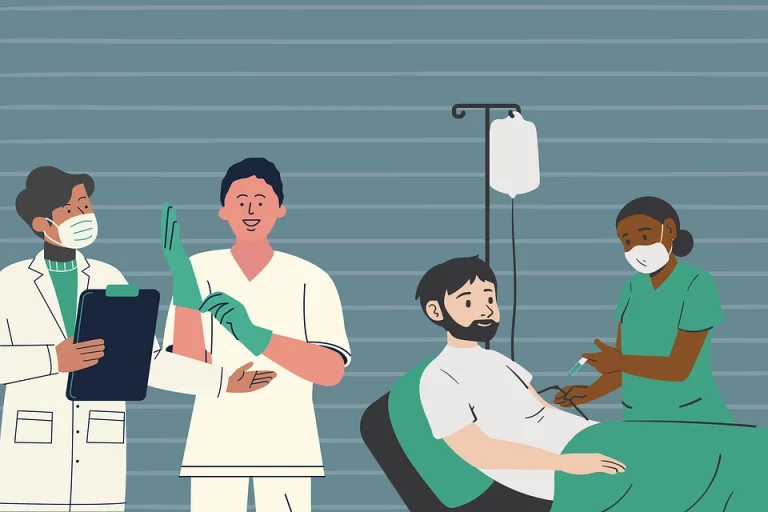Book Appointment Now

Global Urbanization Trends and Healthcare Accessibility
Urbanization is one of the most transformative trends of the 21st century, with more than half of the world’s population now living in cities (United Nations [UN], 2018). While urbanization offers opportunities for economic growth and improved living standards, it also poses significant challenges for healthcare accessibility. As cities expand, healthcare systems must adapt to meet the needs of diverse and growing populations. This essay explores the global trends in urbanization, their impact on healthcare accessibility, and the strategies needed to ensure equitable health services for all.
Our nursing experts can deliver 100% custom paper about Urbanization trends and healthcare accessibility according to your order instructions.
Write my nursing essay
The Rapid Pace of Global Urbanization
Urbanization is occurring at an unprecedented rate, particularly in low- and middle-income countries (LMICs). By 2050, it is estimated that nearly 70% of the global population will reside in urban areas (UN, 2018). This rapid urban growth is driven by factors such as rural-urban migration, natural population increase, and economic opportunities. However, many cities are struggling to keep pace with the demand for infrastructure, housing, and essential services, including healthcare.
In high-income countries, urbanization has often been accompanied by the development of robust healthcare systems. In contrast, LMICs face significant challenges in providing adequate healthcare services to their urban populations. Overcrowding, informal settlements, and inadequate infrastructure exacerbate health disparities, leaving many urban residents without access to quality care (WHO, 2020).
The Impact of Urbanization on Healthcare Accessibility
Urbanization has a profound impact on healthcare accessibility, both positively and negatively. On the one hand, cities often have better healthcare infrastructure, including hospitals, clinics, and specialized services. Urban residents may also benefit from proximity to healthcare facilities and a higher concentration of healthcare professionals (Dye, 2008).
On the other hand, rapid urbanization can strain existing healthcare systems, leading to overcrowded facilities, long wait times, and unequal access to care. In many cities, healthcare services are concentrated in wealthier areas, while low-income neighborhoods and informal settlements are underserved (Vlahov et al., 2007). This spatial inequality creates barriers to healthcare accessibility for vulnerable populations, including migrants, the poor, and the elderly.
The Double Burden of Disease
Urbanization is associated with a double burden of disease, characterized by the coexistence of infectious diseases and non-communicable diseases (NCDs). In LMICs, infectious diseases such as tuberculosis, HIV/AIDS, and diarrheal illnesses remain prevalent due to overcrowding and poor sanitation. At the same time, urbanization has led to lifestyle changes that increase the risk of NCDs, including diabetes, cardiovascular diseases, and obesity (WHO, 2020).
This dual burden places additional pressure on healthcare systems, particularly in resource-limited settings. Ensuring healthcare accessibility in urban areas requires addressing both immediate and long-term health needs, from managing disease outbreaks to promoting preventive care and healthy lifestyles.
Strategies to Improve Healthcare Accessibility in Urban Areas
Addressing the challenges of urbanization and healthcare accessibility requires a multifaceted approach. Policymakers, healthcare providers, and communities must work together to develop innovative solutions that ensure equitable access to care for all urban residents.
Strengthening Primary Healthcare Systems
Primary healthcare is the foundation of accessible and equitable healthcare systems. By investing in primary healthcare services, cities can address a wide range of health needs, from preventive care to the management of chronic conditions (WHO, 2020). Strengthening primary healthcare involves expanding the network of community health centers, training healthcare workers, and ensuring the availability of essential medicines and technologies.
In urban areas, primary healthcare services should be decentralized to reach underserved populations. Mobile clinics, community health workers, and telemedicine can help bridge the gap between healthcare facilities and residents in remote or informal settlements (Kruk et al., 2018).
Addressing Social Determinants of Health
Healthcare accessibility is closely linked to social determinants of health(SDOH), such as income, education, housing, and transportation. Urban residents living in poverty or informal settlements often face multiple barriers to accessing care, including high costs, lack of transportation, and discrimination (Vlahov et al., 2007).
To improve healthcare accessibility, cities must adopt policies that address these social determinants. For example, affordable housing programs, public transportation initiatives, and social protection schemes can help reduce health disparities and ensure that all residents have the opportunity to lead healthy lives.
Leveraging Technology and Innovation
Technology has the potential to revolutionize healthcare accessibility in urban areas. Digital health tools, such as telemedicine, electronic health records, and mobile health apps, can improve the efficiency and reach of healthcare services (Kruk et al., 2018). For instance, telemedicine allows patients in remote or underserved areas to consult with healthcare providers without the need for travel.
In addition, data analytics and artificial intelligence can help cities identify health trends, allocate resources more effectively, and design targeted interventions. By embracing innovation, urban healthcare systems can become more responsive to the needs of their populations.
The Role of Public Health Nurses in Urban Healthcare
Public health nurses (PHNs) play a critical role in improving healthcare accessibility in urban areas. They work at the intersection of healthcare and community, providing essential services such as health education, disease prevention, and care coordination (Kulbok et al., 2012).
In urban settings, PHNs often serve as a bridge between healthcare systems and underserved populations. They conduct home visits, organize health screenings, and advocate for policies that promote health equity. By addressing the unique needs of urban communities, PHNs help ensure that healthcare services are accessible to all.
Global urbanization trends present both opportunities and challenges for healthcare accessibility. While cities offer the potential for improved healthcare infrastructure and services, rapid urban growth often exacerbates health disparities and strains existing systems. Ensuring equitable access to care requires a comprehensive approach that strengthens primary healthcare, addresses social determinants of health, and leverages technology and innovation.
Public health nurses and other healthcare professionals play a vital role in this effort, working tirelessly to bridge gaps in care and promote health equity. As urbanization continues to reshape the world, it is imperative that we prioritize healthcare accessibility to build healthier, more resilient urban communities. By doing so, we can ensure that the benefits of urbanization are shared by all.
Also read:
- Urbanization and Foreign Aid
- Population Urbanization and the Environment
- SOC 305 Contemporary Developments in Technology & Urbanization
References
- Dye, C. (2008). Health and urban living. Science, 319(5864), 766-769.
- Kulbok, P. A., Thatcher, E., Park, E., & Meszaros, P. S. (2012). Evolving public health nursing roles: Focus on community participatory health promotion and prevention. Online Journal of Issues in Nursing, 17(2), 1-14.
- Kruk, M. E., Gage, A. D., Arsenault, C., Jordan, K., Leslie, H. H., Roder-DeWan, S., … & Pate, M. (2018). High-quality health systems in the Sustainable Development Goals era: Time for a revolution. The Lancet Global Health, 6(11), e1196-e1252.
- United Nations. (2018). World Urbanization Prospects: The 2018 Revision. Retrieved from https://www.un.org
- Vlahov, D., Freudenberg, N., Proietti, F., Ompad, D., Quinn, A., Nandi, V., & Galea, S. (2007). Urban as a determinant of health. Journal of Urban Health, 84(1), 16-26.
- World Health Organization. (2020). Urban Health. Retrieved from https://www.who.int




